AEM 2022-2023 Colloquium Series
About
The Department of Aerospace Engineering and Mechanics holds its colloquium Fridays from 2:30 pm to 3:30 pm. Unless otherwise indicated, all lectures will take place in Keller Hall 3-210. Please note some events may be subject to change.
Seminars will not be held on the following dates:
- 1/27/23
- 3/10/23
- 4/7/23
- 4/14/23
- 5/5/23
Spring 2023
Asst Prof Marien Simeni, January 20, 2:30pm
Department of Mechanical Engineering, University of Minnesota
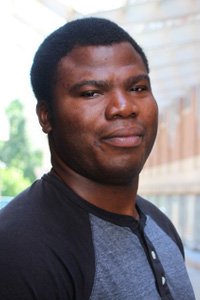
Title: Nanosecond Pulsed Discharges as Testbeds for Nonequilibrium Kinetics
Abstract: Plasmas sources are prominent candidates to resolve many of the listed grand challenges for engineering. Among these sources, nanosecond pulsed discharges have proven to be particularly versatile when it comes to a variety of applications (plasma flow actuation, plasma-assisted combustion and removal of volatile organic compounds). Besides their practical use in industry, these discharges have also shown to be formidable testbeds for nonequilibrium kinetics. For instance, nonequilibrium-based kinetics leading to gas heating rates as high as 5x10 10 K*s -1 has been recently observed in air and explained in such discharges. This fast heat release found an application in the reduction of ignition delays in combustion engines, showing the interplay between nonequilibrium kinetics and applications. Nevertheless, the explanatory mechanism of the latter process involves energy transfer from nitrogen electronically excited levels: N 2 (A, B, C) populated on the nanosecond time-scale by electron-impact excitation of nitrogen molecules. This was only evidenced by rigorous time-resolved measurements of gas temperature, electron density and densities of N 2 (A, B, C). In this talk, I will highlight through a few examples how highly spatio-temporally resolved optical and laser-based diagnostics are critical in furthering our understanding of nonequilibrium kinetics in plasmas. I will also demonstrate new (high-sensitivity) spectroscopic strategies to probe fundamental quantities in plasmas such as the electric field strength. Finally, I will show how these recent advances could help realizing breakthroughs in the field of extreme ultraviolet lithography.
Bio: Marien Simeni is currently (since April 2022) Assistant Professor at the department of Mechanical Engineering of the University of Minnesota. Before joining UMN, he was an Associate Research Physicist at the Princeton Plasma Physics Laboratory (2020-2022). He previously earned a PhD in Aerospace Engineering from Ecole Centrale Paris (France, 2015) and a BS in fundamental physics from Ecole Normale Superieure Cachan (France, 2010). His research focuses on the development of advanced optical diagnostics for low to high pressure plasmas as well as the generation of extreme ultraviolet and soft x-ray light sources for photolithography. He is the first recipient of the Robert Ellis Jr postdoctoral Fellowship in plasma physics.
Asst Prof Suo Yang, February 3, 2:30pm
Mechanical Engineering, University of Minnesota - Twin Cities

Title: Multi-Physics Modeling for Future Propulsion and Power Systems: high-pressure phase separation and plasma assisted ignition
Abstract: In the development of advanced propulsion and power systems, the growing concerns about emissions and efficiency and the pursuit of high speeds have pushed the systems to operate at extreme conditions. These conditions and the corresponding technical solutions often introduce more physics, which brings new challenges to modeling and simulation. In this presentation, I will talk about two examples of such multi-physics modeling from our recent works: (1) Advanced gas turbines and detonation engines operate at high pressures for high power density and efficiency. At such conditions, the injected multicomponent liquid propellants and fuel-air mixtures often go through thermodynamically transcritical phase change. We developed a CFD framework based on the first-principle vapor-liquid equilibrium (VLE) theory to accurately predict high-pressure phase change, and demonstrated that phase separation can be triggered by either mixing or expansion waves. (2) Plasma assisted combustion (PAC) is a promising technology to enable ignition and stable combustion either at extreme conditions (e.g., high-speed flows in scramjets) or using low-reactivity fuels (e.g., carbon-free ammonia). We developed a series of 0D-3D CFD solvers to model PAC with different levels of fidelity. Using our solvers, we figured out why plasma can surprisingly reduce the NOx emission of ammonia combustion and investigated how turbulence and pulsing frequency affect plasma assisted ignition performance.
Bio: Dr. Suo Yang is a Richard and Barbara Nelson Assistant Professor of Mechanical Engineering at the University of Minnesota - Twin Cities. During 2017-2018, Dr. Yang was a Postdoctoral Research Associate in Mechanical and Aerospace Engineering at Princeton University. He received Ph.D. (2017) and M.S. (2014) degrees in Aerospace Engineering, and another M.S. degree in Computational Science and Engineering (2015), all from Georgia Institute of Technology. He received a B.S. degree in Mathematics and Applied Mathematics from Zhejiang University in 2011. Dr. Yang's research focuses on the modeling and simulation of turbulent reacting and multiphase flows, including combustion, plasma, particulate and multiphase flows, and hypersonics, with applications to propulsion and energy systems. He has been authored for more than 60 peer-reviewed journal articles and referred conference papers with Google Citations of 1,000+ and a Google H-Index of 18, in which he received Editor's Pick and Featured Article awards from Physics of Fluids and Combustion and Flame. Dr. Yang is a recipient of the DARPA Young Faculty Award (YFA) and ONR Young Investigator Program (YIP) Award. His research is supported by NSF, ARL, ARO, DARPA, ONR, AFRL, ARPA-E, and ExxonMobil. Dr. Yang is a Senior Member of AIAA and a committee member of three AIAA Technical Committees. He also serves as an active reviewer for many high top-tier journals for which he received three Outstanding Reviewer Awards.
Prof Pradeep Guduru, February 10, 2:30 PM
School of Engineering -- Brown University
Title: Dynamic Strength of Energetic Material Simulants: Experiments and Modeling
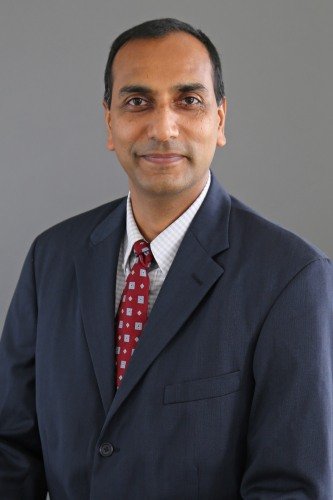
Abstract: While the mechanical behavior of energetic materials and their simulants has been widely studied under normal impact, their shearing response under large pressures and shear strain-rates remains unexplored. Such measurements are crucial to inform constitutive models that aim to predict hot-spot formation and ignition behavior of energetic materials subjected to multi-axial loading. In this study, dynamic strength of hydroxyl terminated polybutadiene - HTPB (an elastomeric binder), monolithic sucrose (an energetic material simulant) and their composites, under normal stresses of 3-10 GPa and shear strain rates of the order of 10 5 -10 6 s -1 is studied. While the shearing resistance of HTPB increases steadily under large shear strains, the shear strength of sucrose and the composites show a dramatic fall. The loss of shear strength of sucrose is attributed to the formation of shear localization. The shearing resistance of HTPB is shown to be highly pressure-sensitive whereas that of sucrose shows relatively small sensitivity to pressure. Moreover, at normal stresses of 9-10 GPa, the shear strength of HTPB becomes similar to that of sucrose and beyond these normal stresses, a transition in the localization and failure modes of the composite is expected. A viscoelastic model with pressure-dependent shear wave speeds and shearing resistance is used to describe the experimentally observed dynamic response of HTPB. A thermodynamically consistent constitutive model is presented to model the thermoelastic and thermo-viscoplastic response of sucrose. A complete Mie-Gruneisen equation of state is employed to model the volumetric behavior while the deviatoric response is captured through a modified Johnson-Cook model. The material model captures experimental observations and predicts localization in the form of adiabatic shear bands, which explains the sharp drop in shearing resistance of sucrose observed in the experiments. The talk will also present development of a high-speed microscopy technique for quantitative imaging of dynamic events at high spatial and temporal resolutions simultaneously and its application to image initiation of a shear localization event from a notch tip in polycarbonate.
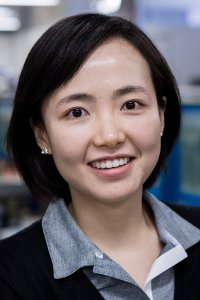
Asst Prof Judy Q. Yang, February 17, 2:30pm
Department of Civil, Environmental, and Geo- Engineering, University of Minnesota - Twin Cities
Title: Multiscale biota-sediment-flow interactions and their global environmental and health impacts
Abstract: A wide variety of global environmental and health issues involve physical and biological interactions among fluids, particles or surfaces, and microbes at both micro- and macro-scales. For example, macro- or channel-scale sediment transport, a key process that controls coastal erosion, can vary by several orders of magnitude due to micro-scale sediment-sediment and sediment-bacteria interactions, including aggregation and biofilm formation. Other examples include clay algae flocculation, one of the most promising methods to remove harmful algal blooms, and soil carbon storage, responsible for the uptake of about 20% of annual anthropogenic carbon emissions, both of which are strongly impacted by the physical and biogeochemical interactions between clay micro-aggregates and living organisms at the micro-scale. Experimental studies of fluid-particle/surface-bacteria interactions across both micro- and macro-scales are needed to address these environmental and health issues, yet such experiments are currently lacking. In this talk, I will discuss how I use flume experiments to study sediment transport, microfluidic experiments to study soil carbon dynamics, and meso-scale microbial experiments to study bacterial spreading in unsaturated porous media such as soil and lung. Afterward, I will discuss how my group is integrating technologies at different scales to understand the fundamentals of fluid-particle-microbe interactions, which will help with predictions and mitigations of coastal erosion, harmful algal blooms, soil carbon emission, and the spread of pathogenic bacteria.
Bio: Judy Yang is currently an assistant professor in the Department of Civil, Environmental, and Geo-Engineering and Saint Anthony Falls Laboratory at the University of Minnesota. She obtained her Ph.D. degree in Environmental Engineering at MIT in 2018. She had been a postdoctoral researcher at Princeton University from 2018 to 2020. She is interested in designing multiscale experiments, ranging from microfluidics to flume experiments, to unravel impacts of micro-scale transport processes on macro-scale environmental and health issues, including coastal erosion, soil carbon dynamics, bacterial spreading in soil, and bacterial lung infections.
Asst Prof Michelle Calabrese, February 24, 2:30pm
Department of Chemical Engineering and Materials Science, University of Minnesota - Twin Cities
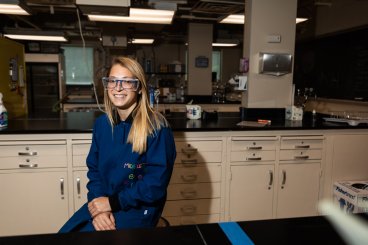
Title: New approaches to dripping-onto-substrate (DoS) extensional rheometry to assess injectability and coatability in complex fluids
Abstract: Injectability, sprayability, and printability in complex fluids are dictated by the extensional flow properties. Until recently, the extensional rheology of protein medications and other low viscosity fluids has been sparsely studied due to experimental limitations. Most extensional rheology devices yield mixed shear and extensional flows, cover limited extension rates, require multiple loadings, and are not commercially available. However, capillary-driven thinning of a liquid bridge – in which filament thinning can be mathematically described by distinct behavioral regimes accounting for inertial, viscous, elastic, and capillary forces – can be used to accurately measure rheological parameters.
To measure scarce materials and low viscosity fluids in truly small volumes, we have developed instrumentation for simultaneous dripping-onto-substrate (DoS) extensional rheology and surface tension measurements in <10 μL/trial over a range of temperatures, humidities, and organic solvents. Here, we demonstrate the utility of capillary-driven thinning to determine injectability and coatability for three case studies: protein therapeutics, thermoresponsive self-assembling polymers, and olymers in volatile organic solvents. In the first, we show that common polymeric excipients added to stabilize proteins in shear flows produce adverse behavior in extension that can cause protein denaturing. Next, we demonstrate the utility of our newly-developed chamber that enables temperature-controlled DoS (TC-DoS) measurements of block copolymer micelle solutions. While spherical micelles at ambient conditions exhibit inertiocapillary (IC) thinning, above the sphere-to-rod transition temperature, liquid bridge thinning evolves towards viscocapillary (VC) behavior or elastocapillary (EC) thinning once micelles are sufficiently long and entangled. Finally for polymer solutions in organic solvents, we employ a new environmental control system to confirm scaling relationships in chloroform for the first time, and also show that evaporation effects during measurement can depend more on polymer mobility than solvent vapor pressure. These case studies illustrate the utility of solution extensional rheology for predicting injectability and coatability, enabling rapid formulation screening using a single drop.
Bio: Michelle A Calabrese is an assistant professor in the Department of Chemical Engineering and Materials Science at the University of Minnesota. She received her BS in Chemical Engineering from the University of Pennsylvania in 2012. She completed her PhD in Chemical Engineering at the University of Delaware in 2017, where she focused on developing new techniques in rheology and neutron scattering to understand the flow properties of complex fluids. Following her postdoc in chemical engineering at MIT, she joined the faculty at UMN in mid-2019. Her research group employs rheology, soft matter physics, and polymer and nanoparticle synthesis to address a range of fundamental and applied problems in polymer and soft materials engineering. Her recent recognitions include the 3M Non-tenured Faculty Award, NSF CAREER Award, and NIH NIDCD Early Career Research Award (R21).
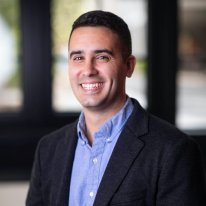
Asst Prof Zachary Cordero, March 3, 2:30pm
Boeing - Department of Aeronautics and Astronautics, Massachusetts Institute of Technology
Title: Burn-resistant alloys for high-performance reusable rocket engines
Abstract: High-performance eminently reusable rocket engines are essential to proposed low-cost heavy lift launch vehicles that will enable the next generation of space technologies. Current development efforts are focused on oxidizer-rich and full-flow staged combustion engines, which offer advantages in fuel efficiency. However, these engines subject materials to extreme operating conditions, involving cryogenic temperatures, extreme temperature swings, high heat fluxes, and ultra-high-pressure oxygen. These conditions give rise to a host of catastrophic failure modes, from oxidation-assisted fatigue to strain-ratcheting induced creep rupture to metal fires. The success of these new reusable propulsion systems thus depends on advances in the processing, design, and application of robust materials specifically tailored to withstand such extreme environments. In this talk, I will share initial insights from our investigation into the underlying mechanisms of frictional ignition, one of the ignition modes of greatest concern in oxidizer-rich turbopumps and the root cause of several recent launch failures (Sea Launch's NSS-8 and Orbital's Orb-3). We have assessed the role of oxide tribolayer breakdown in frictional ignition using high-speed sliding experiments, post-mortem characterization of recovered specimens, continuum mechanics modeling of sliding contacts, and thermochemical calculations of the structure and stability of oxide tribolayers. Our results reveal why certain superalloys are intrinsically resistant ignition, suggesting approaches to alloy design for the high-pressure oxygen environments in ox-rich turbines.
Bio: Zack Cordero is the Boeing Assistant Professor of Aeronautics and Astronautics at MIT. He received an SB in physics and a PhD in materials science and engineering from MIT. Prior to joining the MIT faculty, Zack held appointments as a postdoctoral fellow in the Manufacturing Demonstration Facility of Oak Ridge National Laboratory and as an assistant professor in the Materials Science and NanoEngineering department at Rice University. Zack's research at MIT integrates materials processing, mechanics of materials, and structural design to develop new materials and structures for launch vehicles and spacecraft.
Prof Yuri Bazilevs, March 17, 2:30 PM
Brown University - School of Engineering
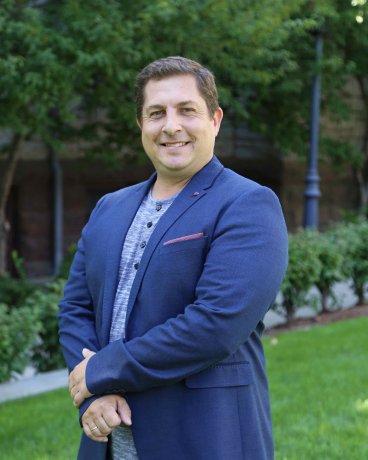
Title: Advances and Breakthroughs in Shells with Emphasis on Aerospace Composites
Abstract: Carbon Fiber Reinforced Polymer (CFRP) structures enjoy great popularity in aerospace applications largely due to their high stiffness-to-weight ratio. The high strength feature of CFRP comes from brittle, unidirectional carbon fibers embedded in a lightweight, polymer-based epoxy matrix. For instance, the Boeing 787 Dreamliner aircraft is 80% composite by volume, with 32 tons of CFRP composites scattered between the fuselage, wings, tail, doors, and interior. However, CFRPs present a significant challenge to the computational analysis, which is addressed in this presentation. A comprehensive framework for damage modeling of laminated composite structures is presented. The formulation is based on a multilayer approach that employs Kirchhoff–Love shell theory coupled with anisotropic elastoplastic damage to model the mechanical behavior of the individual plies. The plies are connected at their interfaces through a mixed-mode cohesive damage model that is used to represent delamination. The ply no-interpenetration condition is enforced using a penalty formulation. The formulation ensures a smooth transition from the opening mode, which is governed by the cohesive damage law, to the closing mode, which is governed by the penalty approach, and results in a significantly more stable numerical methodology overall. The resulting framework is deployed on a series of simulation cases with increasing complexity of the geometry and mechanical phenomena modeled. In all cases, experimental data is used for the validation purposes and for demonstrating the superior robustness, predictive power, and practicality of the formulation presented. The presentation concludes with some extensions of the proposed framework to other challenging applications in the mechanics of thin structures.
Bio: Yuri Bazilevs is the E. Paul Sorensen Professor in the School of Engineering at Brown University, where he was the Lead and Executive Committee representative of the Mechanics of Solids and Structures group. He was previously a Professor and Vice Chair in the Structural Engineering Department at the University of California, San Diego. Yuri’s research interests lie in the broad field of computational science and engineering, with emphasis on the modeling and simulation in solids and structures, fluids, and their coupling in HPC environments. For his research contributions Yuri received many awards and honors, including the 2018 Walter E. Huber Research Prize from the ASCE, the 2020 Gustus L. Larson Award from the ASME, and the Computational Mechanics Award from the International Association for Computational Mechanics (IACM). He is included in the lists of Highly Cited Researchers, both in the Engineering (2015-2018) and Computer Science (2014-2019) categories. Yuri recently completed his service as the President of the US Association for Computational Mechanics (USACM) and as the Chairman of the Applied Mechanics Division of the ASME. He currently serves on the US National Committee for Theoretical and Applied Mechanics (USNCTAM).
Prof Jay Humphrey, March 24, 2:30 PM
Yale - School of Engineering & Applied Science

Midwest Mechanics Seminar Speaker
Title: From Mechanics to Modeling Mechanobiological Regulation of Tissue Structure and Function
Abstract: Cells within load-bearing soft tissues sense and respond to diverse stimuli, including mechanobiological and immunobiological. Mechanical homeostasis is a ubiquitous process by which certain mechanical quantities are regulated to remain, within a range, near a preferred value, often called a set point. As an example, both flow-induced wall shear stress and pressure-induced intramural stress tend to be mechano-regulated to remain close to region-specific set-points in vascular mechanics. In some cases, inflammation can support mechanical homeostasis while in other cases it can prevent such homeostasis.
In this talk, we will consider two cases wherein it is important to model both the mechanical and the inflammatory signals and responses, illustrated here for blood vessels. In the first case, we will consider the in vivo development of a tissue engineered neovessel from an implanted polymeric implant. In the second case, we will consider the growth and remodeling of a native artery in a mouse model of induced hypertension. Although inflammation arises for very different reasons in these two cases, we shall see how a consistent constrained mixture model of growth and remodeling can be used to predict the evolving geometry, composition, and wall properties in both cases. Importantly, computational predictions in the tissue engineered case helped lead to US Food and Drug Administration (FDA) approval of a clinical trial of a promising technology for treating congenital heart defects in children, thus showing translational potential of immuno-mechanical computational models of tissue response. For more information, please find details presented elsewhere [1-4].
Bio: J.D. Humphrey is John C. Malone Professor of Biomedical Engineering at Yale University. He received the Ph.D. in Engineering Science and Mechanics from The Georgia Institute of Technology and completed a post-doctoral fellowship in Medicine - Cardiovascular at Johns Hopkins University. His research and teaching focuses on vascular mechanics and mechanobiology, with particular interest in development, hypertension, aneurysms, vascular aging, and tissue engineering. He has authored a graduate textbook (Cardiovascular Solid Mechanics), an undergraduate textbook (An Introduction to Biomechanics), and a handbook (Style and Ethics of Communication in Science and Engineering), and published 350+ archival journal papers. He served for 10 years as founding co-editor for the journal Biomechanics and Modeling in Mechanobiology, for 12 years on the World Council for Biomechanics, including as Chair of the Technical Program of the 2014 World Congress in Biomechanics, and served for two years as Chair of the US National Committee on Biomechanics. He lives with his wife Rita of 41 years in Branford, CT.
Prof Zak Kassas, March 31, 2:30 PM
IEEE Aerospace and Electronic Systems (AESS) Distinguished Lecturer, The Ohio State University

Title: Ad Astra: Navigation with Megaconstellation LEO Satellites
Abstract: We are witnessing a space renaissance. Tens of thousands of broadband low Earth orbit (LEO) satellites are expected to be launched by the end of this decade. These planned megaconstellations of LEO satellites along with existing constellations will shower the Earth with a plethora of signals of opportunity, diverse in frequency and direction. These signals could be exploited for navigation in the inevitable event that global navigation satellite system (GNSS) signals become unavailable (e.g., in deep urban canyons, under dense foliage, during unintentional interference, and intentional jamming) or untrustworthy (e.g., under malicious spoofing attacks).
Nicolas Triantafyllidis, April 28, 2:30 PM
Ecole Polytechnique
Title: STABILITY PROBLEMS IN MECHANICS: MULTIPHYSICS & MULTISCALE ASPECTS (A MECANICIAN’S PERSPECTIVE…)
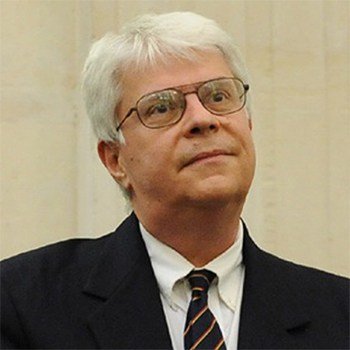
Abstract: Stability is a fascinating topic in solid mechanics that has its roots in the celebrated Euler column buckling problem, which first appeared in 1744. Over the years advances in technology have led to the study of ever more complicated structures first in civil and subsequently in mechanical engineering applications. Aerospace applications, most notably failure of solid propellant rockets, led the way in the 1950s. Problems associated with materials and electronics industries came on stage in the 1970s and 1980s, starting with instabilities associated with thin films and phase transformations in shape memory alloys (SMA’s), just to name some of the most preeminent examples. In a parallel path, starting in the late 19th century, mathematicians studying nonlinear differential equations, developed the concept of a bifurcation (term coined by Poincare) and created powerful techniques to study the associated singularities, followed by advances in group-theoretical methods that exploit the problem’s underlying symmetries. Amazing progress has been made since the early days of structural buckling problems and continues to be made in this field, with applications ranging from atomistic to geological scales. With the advent of new materials, the number of applications in this area continues to progress with an ever-increasing pace.
In this talk we present selected applications of stability problems involving phenomena a) across spatial scales and b) driven by multiphysics coupling. In the first class of applications we visit – by decreasing the size of the underlying scale – the instabilities occurring in fiber-reinforced composites, honeycomb and crystal lattices (shape memory effects). In the second class, we present stability problems in magnetoelastic thin films, liquid crystals and step-bunching in epitaxial thin film deposition. In all these applications, we use both continuum descriptions of the problem at hand or appropriate micromechanical models and the mathematical tools of bifurcation theory and symmetry groups.
Bio: Prof. Nicolas Triantafyllidis has obtained a Ph.D. in Engineering and an MS in Applied Mathematics from Brown University in 1980. The same year he joined the faculty of the Aerospace Engineering Department at the University of Michigan in Ann Arbor, MI, USA starting as an Assistant Professor and reaching the rank of Full Professor in the Departments of Aerospace Engineering and Mechanical Engineering & Applied Mechanics. He
is currently an emeritus Professor of the University of Michigan. In 2009 he moved to France to become CNRS Director of Research in the Solid Mechanics Laboratory (LMS) and a Professor of Mechanics at the Ecole Polytechnique, where he is currently a member of the Haut College.